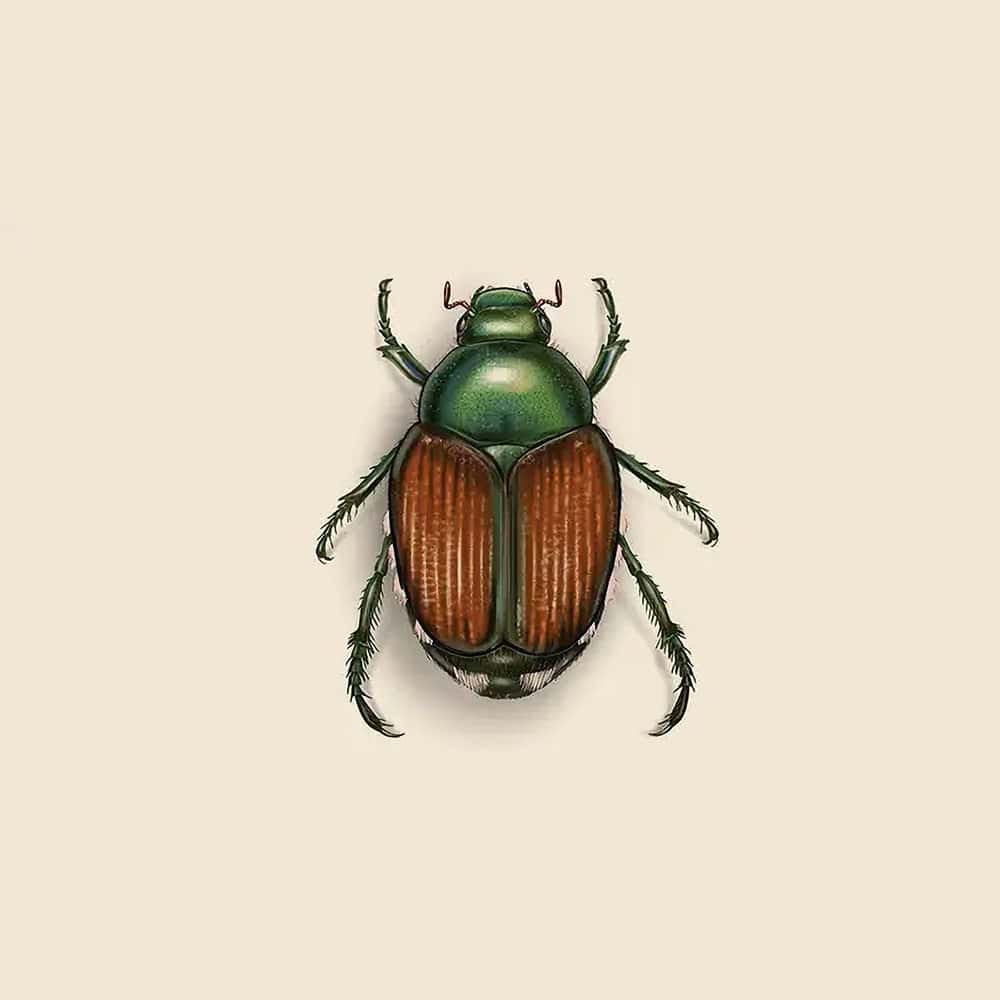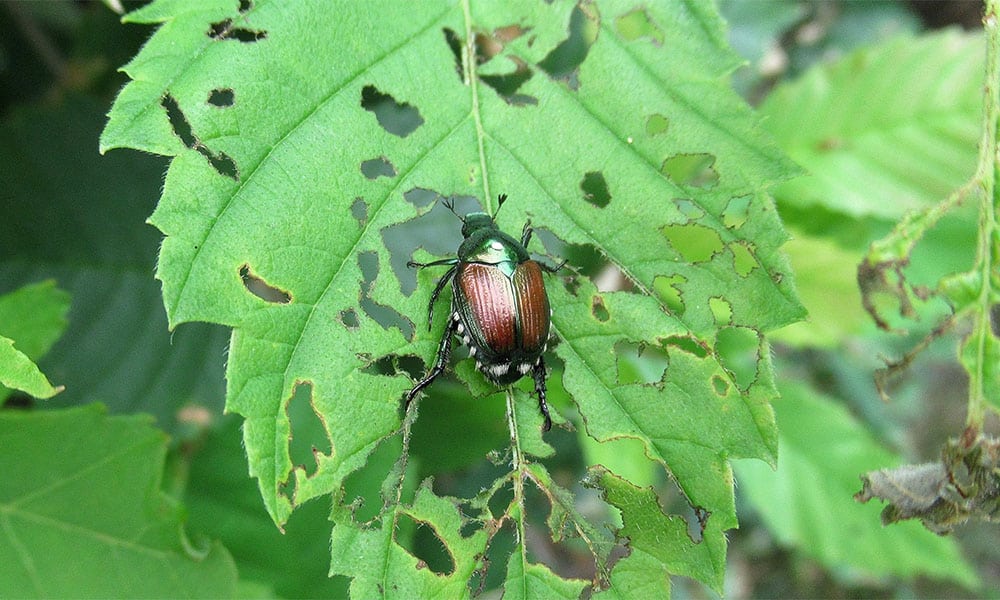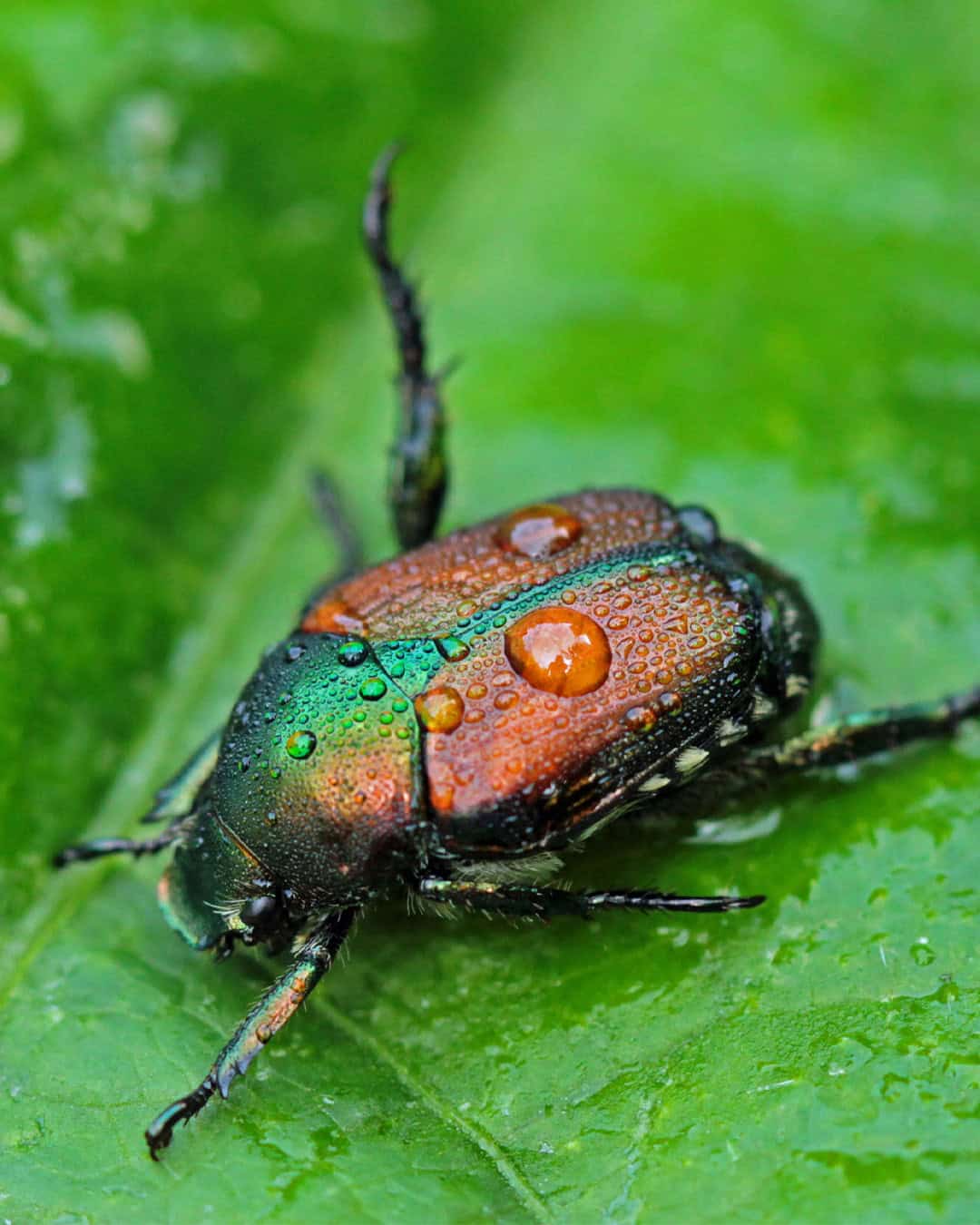Japanese Beetle Facts & Information
Japanese beetles, known for their destructive feeding habits, are a major concern for gardeners and homeowners. These pests can decimate flowers, foliage, and crops, causing significant aesthetic and economic damage.

Popillia Japonica
What You Need To Know About Japanese Beetles
What do Japanese beetles look like?
Japanese beetles are about 1/2 inch long with metallic green bodies and copper-colored wing covers. They also have distinctive white tufts of hair along the sides of their abdomen.
What do Japanese beetles eat?
Japanese beetles feed on a wide variety of plants, including roses, grapes, linden trees, and many types of fruit and vegetable crops. They eat the leaves, flowers, and fruits of these plants.
What sort of habitat do Japanese beetles live in?
Japanese beetles are commonly found in gardens, agricultural fields, and urban landscapes. They thrive in areas with well-maintained lawns and a variety of flowering plants.
How do Japanese beetles commonly behave?
Japanese beetles are known for their gregarious behavior, often feeding in large groups. They are strong fliers and can travel several miles to find food.
Did you know this about Japanese beetles?
Japanese beetles were accidentally introduced to the United States in the early 20th century and have since become a widespread and significant pest. Interestingly, they are known to emit a pheromone that attracts more beetles to their feeding site, leading to large infestations.
Understanding Japanese Beetle Infestations
Understanding Japanese beetle infestations is crucial for effective control. Adult beetles emerge in early summer and feed on over 300 plant species, skeletonizing leaves and reducing plants to bare stems. Their larvae, known as grubs, live in the soil and feed on grassroots, leading to dead patches in lawns and weakened plants.Japanese beetles do not pose direct health risks to humans, but their presence can attract predators like skunks and raccoons, which can cause further property damage.Infestations can severely damage ornamental plants, fruit trees, shrubs, and lawns, leading to costly repairs and replacements.Japanese beetles are highly mobile and can fly up to a mile in search of food, making infestations spread rapidly.

How Hearts Handles Japanese Beetle Treatment
Hearts Pest Management employs an integrated pest management approach to tackle Japanese beetle infestations. Our process begins with a thorough inspection to assess the extent of the infestation and identify affected areas. We then implement a customized treatment plan, which may include eco-friendly options to ensure the safety of your plants and the environment.
Japanese Beetle Inspection
Japanese Beetle Treatment
Japanese Beetle Prevention
Educational Resources

Think You Might Have a Japanese Beetle Infestation?
At Hearts Pest Control, we understand the challenges associated with Japanese Beetle infestations and are here to provide professional solutions tailored to your needs. Flourishing in warm and humid climates, they are prevalent in many regions, including San Diego County, Orange County, and Los Angeles County.